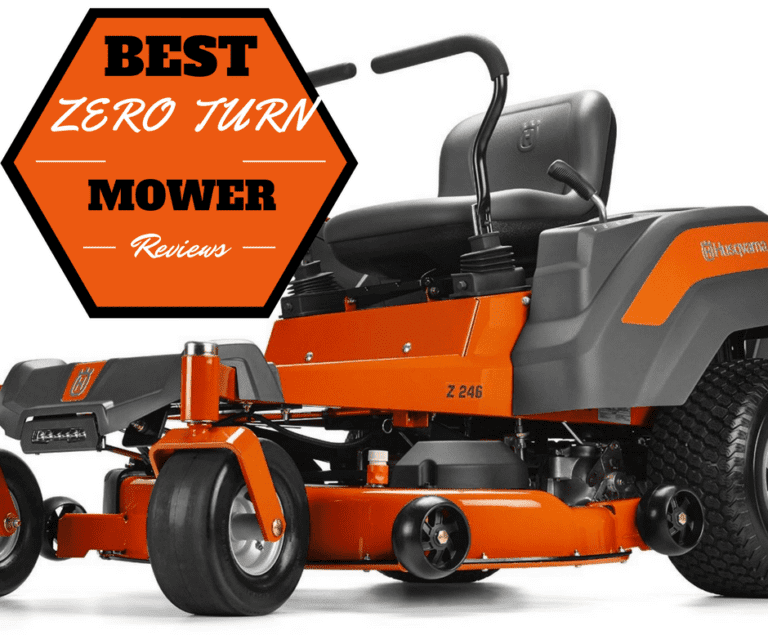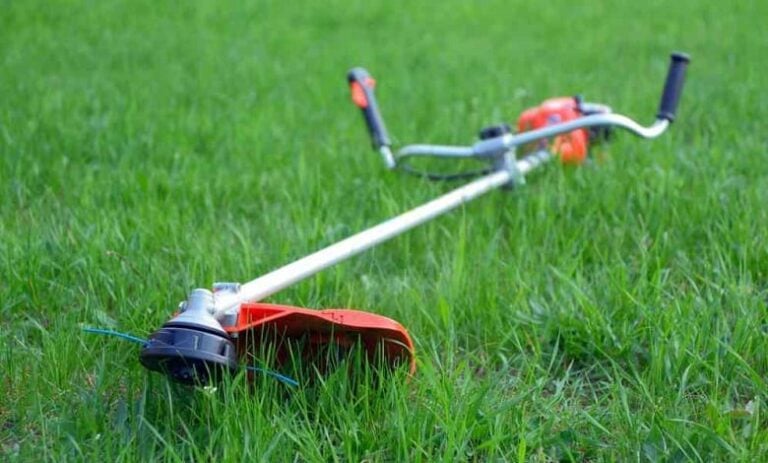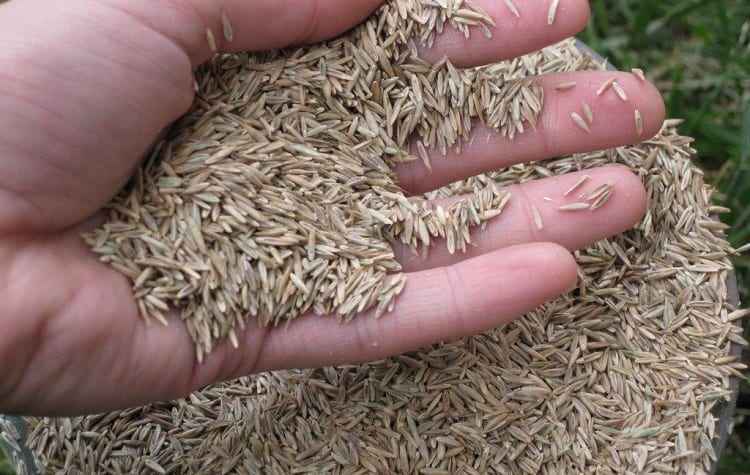Where To Buy Sod (And How To Save Money Buying It)
One of the fastest and most convenient ways to get a beautiful lawn is by getting sod. Sod is an all-natural layering of grass connected at the roots that, when applied, creates a near-instant green lawn.
Where do you get sod? We’re going to answer that question today, along with other important questions that you may have.
By the end of this page, you should know everything you need to know about sod, how it’s maintained, and how you can use it to level up your garden, all while saving money!
What Is Sod?
For those who don’t know, let’s establish what sod is and what it’s used for.
Sod is a patch of grass that has been carefully cut away from where it was grown so that there is still a root system holding the grass together.
This enables us to transfer grass across properties to encourage speedy lawn growth, especially where seeds would get blown away or be unable to sprout properly.
Think of it like a hair transplant, where hair is taken from another part of your body and placed onto the head, where it can grow better.
Sod is used by private individuals and large venues alike, such as natural golf courses and sports stadiums.
It isn’t just used to make your lawn look good, there are actual benefits to having sod transplanted onto your lawn.
- Where the ground is prone to erosion, like at construction sites or on hillsides, sod can slow erosive processes down by putting a layer of grass between the elements and soft earth.
- Sod can also help cool the earth beneath it too, in places where the ground quality is being negatively affected by sunlight exposure.
- Introducing grass into areas deprived of plant life can improve the quality of air and water in the local vicinity.
- Sod can also help prevent flooding if sod is applied somewhere where it can drain/divert water away. Water will get absorbed to become part of the ground’s water supply.
- Historically sod was also used as roofing for homes. The practice can still be seen in some Scandinavian neighborhoods.
How Sod Is Grown
Given the nature of sod, it needs to be grown somewhere else before it is cut away, transported, and then applied to the customer’s chosen property.
It can’t be transported anywhere, the sod needs to be applied quickly after removal so the plants don’t die, and so sod farms tend to operate locally.
This means there are thousands of farms across America that specialize in growing sod. That may sound boring for a farming job but it’s a huge industry that keeps America’s lawns green without requiring as much chemical assistance.
Sod is planted and harvested within a ten to eighteen-month window, depending on which species of sod is being grown.
We have a short guide to popular sod types below, for those who are curious. Then it gets harvested and sold in several ways.
Some sod is offered in square slabs while others roll it up, just like you would with a carpet.
When you remember that stadiums and golf courses buy sod, you’ll realize those sod rolls can get pretty big.
There have also been attempts to grow sod hydroponically, with the use of machinery and chemicals instead of soil.
The resulting sod is lighter and able to travel further across the country before going bad, with the aim being to create sod that can be internationally shipped to lawns across the world.
Types Of Sod
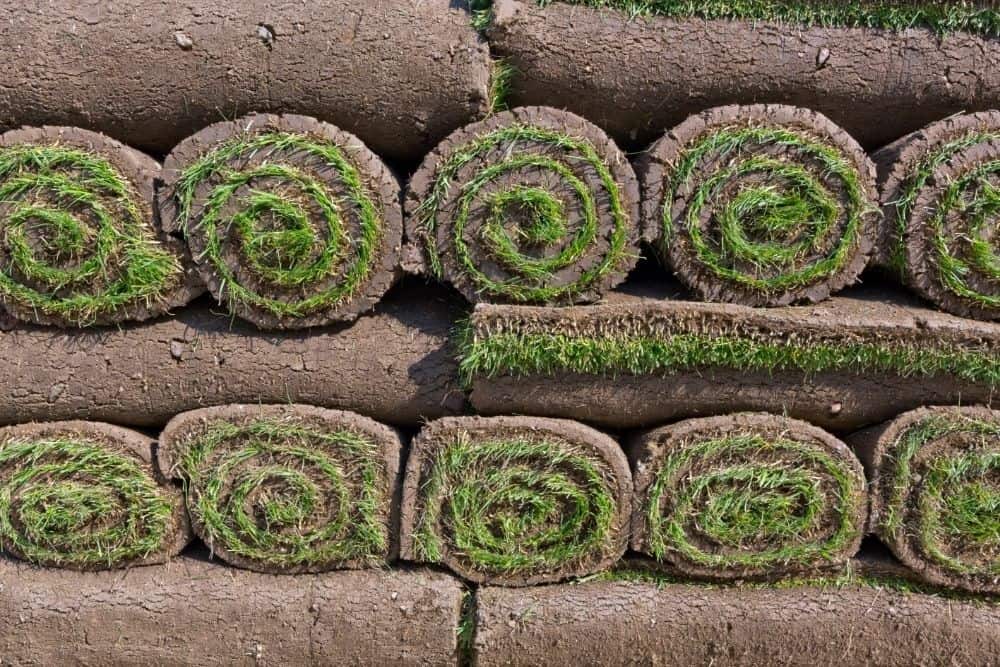
As we have alluded to already, sod is just a type of lawn fixture that encompasses several grass species.
No one grass species will thrive everywhere, so different types of sod are needed to cater to everybody’s lawns and the climate those lawns are existing in.
The most popular grasses used in sods are:
- Bermuda Grass: A lawn grass that’s very popular in the Southeastern USA for its vibrant green coloring and tolerance of both foot traffic and perilous droughts.
- Bella Bluegrass: Uniquely sold as sod, it requires little to no trimming to stay neat. It is heavily used in states that are trying to fight against droughts and poor soil. It’s also one of the few types of sod grass that grows well in the north USA.
- St. Augustine/Captive St. Augustine: Popular in the warm and sunny southern USA, these grasses don’t perform well in the cold but can still thrive in the shade. It was made by the University of Florida to resist the chinch bug, a common grass pest.
- Centipede Grass/Covington: More popular in Florida than anywhere else, these grasses actually came from Asia over a century ago. They are known for their coarse appearance and not needing to be maintained that much.
Before Buying Sod
Now that we know more about what sod is and what we are looking for, start thinking about buying sod. If you want to get the best prices, you’ll need to be smart when shopping for sod.
You need to consider which kind of sod you need by:
- Knowing the type of land on your property. Knowing the species of grass native to your property/local neighborhood helps a lot. You can even bring cuttings of your existing lawn to sod experts so they can find sod grass that fits the color and shape perfectly.
- Sod that is privately bought is shipped directly to the home. It’s up to you to have everything ready for installation when the delivery truck comes around. Sod should be installed on the day of its arrival to get the best possible results. If there is a delay for whatever reason, keeping the sod moist will keep it from dying too soon.
- You should also make sure your grass is mowed down and free of any obstacles so that you can apply the sod without interruptions. You can also expose some soil and add fertilizer to promote future sod growth.
You have two ideal time windows to buy and apply sod – spring or fall.
Applying sod during the summer or winter months, where the weather is at its most extreme, will make it very difficult for the sod to take hold and promote further grass growth.
The earlier in those seasons, the better. Then, with plenty of watering, you should be able to nurture life on your lawn once again.
Where You Can Buy Sod
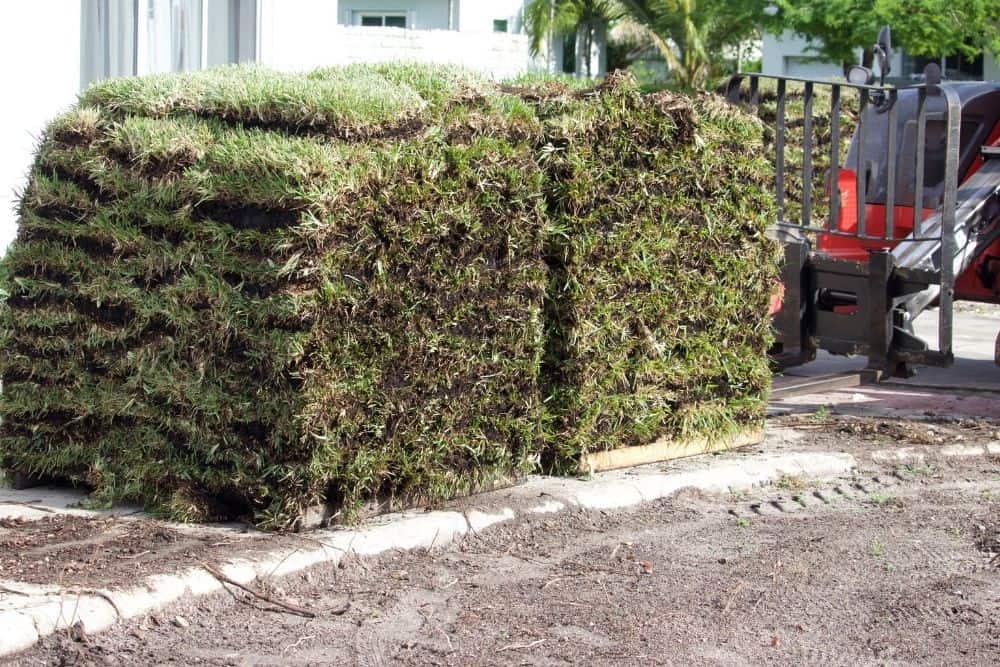
Whether you had your heart set on the idea or you’ve been convinced by what you read above, you may be wondering where you can get sod.
Fortunately for you, there are many ways that we transport goods nowadays, even sensitive ones like sod, and so you should have no trouble bringing sod to your home.
Local Stores
First, you can start locally at box stores or larger garden centers. Local businesses, especially ones that are family-run, can cut you a great deal on their products sometimes.
Remember that sod is alive and should be treated properly, so don’t take a too-good-to-true deal for a very cheap pallet of sod that’s been left in the sun for a week.
Delivery Services
Our transport and delivery infrastructure has come a long way over the past decade.
In some areas, it’s possible to buy sod online and arrange for it to be delivered, and for it to arrive promptly so that doesn’t disturb the plants too much.
Remember to choose a grass species that is compatible with your destination lawn. Some grow in sun, others in shade, while others are useless when trampled on by children or dogs.
Since you’re focusing on getting sod for cheap, you should also shop around and find a delivery service that charges less.
That way, you can go with them and get quality service but still save money when the sod is sent to you.
How To Get Sod Cheap
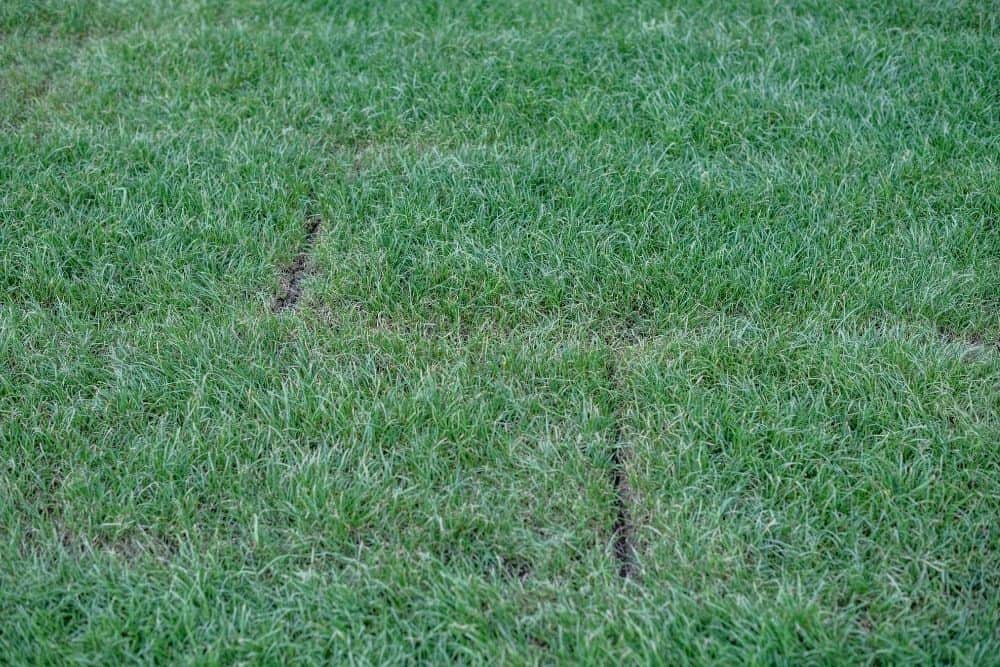
You can save money when buying sod by doing several things.
First, you can cut down on transport and delivery costs by getting the sod yourself.
Assuming you have a vehicle that is big enough to shift sod around, you can pick up the sod from the farm in your local area.
Then you can take it home, where you’ll only have to pay for the gasoline you use on the journey.
Ordering online can also save you some money sometimes. Through the Internet, you can shop around and find a local sod farm that offers competitive prices for its service.
Pick the one that’s best for you and make sure they allow online orders and delivery. Then you pay them to bring the sod to you, sometimes it’s cheaper.
Lastly, consider learning some manual labor skills, like how to install the sod yourself. Hiring people will just make the product unnecessarily more expensive, so why not do it yourself?
Over time, it can save you a lot of money. It also gets you up and active, so that’s beneficial to your health.
Naturally, you will need to research how to work with sod.
If you’re doing a long-term lawn overhaul, you will have the time to practice laying other sod samples down to hone your skills, so you don’t botch it on the big day.
Fortunately for you, there are plenty of guides and videos available online that will teach you how to apply your own sod. This can drastically reduce the cost of buying and applying sod.
Final Sod Tips
With that, we are coming to the end of our page all about sod. With the information above, you should be able to source, buy, and take delivery of sod without burning a hole in your wallet.
Once you have the sod, you’ll be able to grow a beautiful lawn in record time.
Growing a great lawn is only the beginning, however. Lawns don’t stay vibrant and healthy forever, even if it’s helped by sod, because they need water and other nutrients.
Get some fertilizer that is compatible with your sod grass and figure out how much water the grass demands. From there, you will be able to maintain your lawn for years to come.
We tend to find that starting off strong works for sod. Once the sod is in place, you can water it three times every day for the first week.
When the next week rolls around, water twice daily instead. Then, on the third week, water once daily and ease into the routine of keeping your lawn hydrated and happy.
Then you can pursue a typical lawn watering schedule without worrying about how the sod will react.

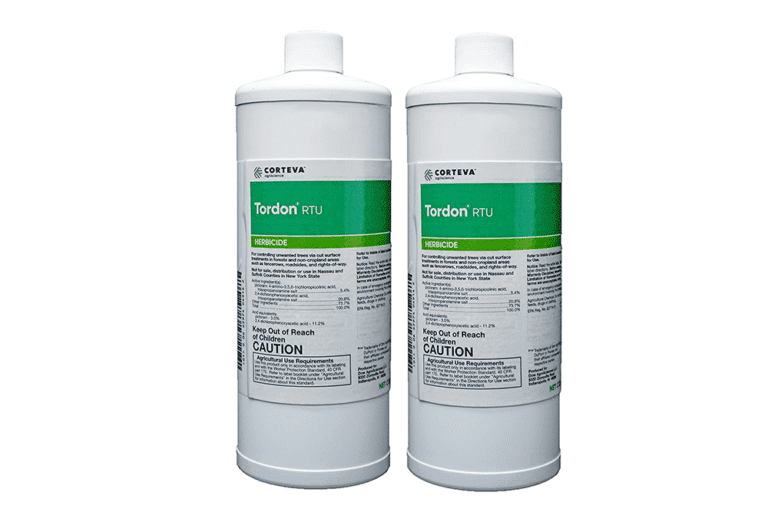
![Best Battery Powered Cordless Weed Eater Reviews [year]](https://properlyrooted.com/wp-content/uploads/2022/10/Best-Battery-Powered-Cordless-Weed-Eater-Reviews-150x150-1.png)
